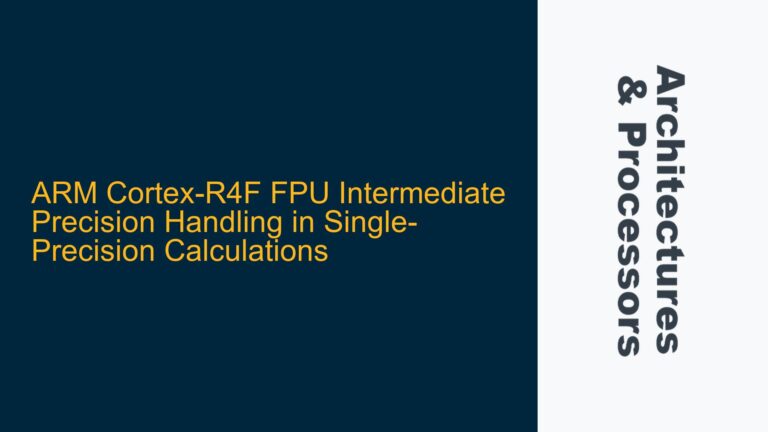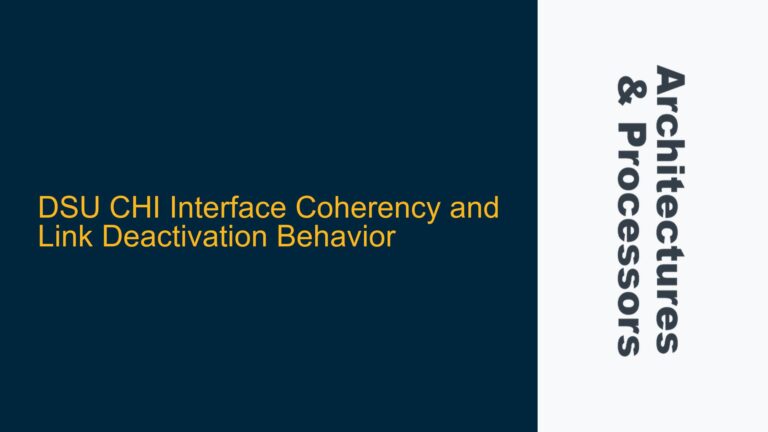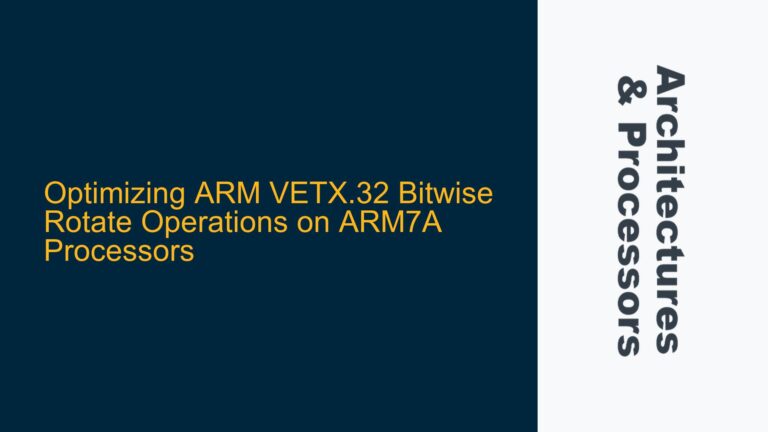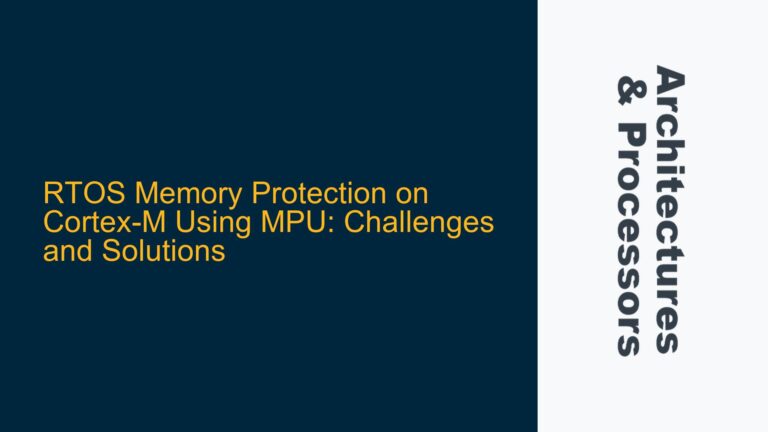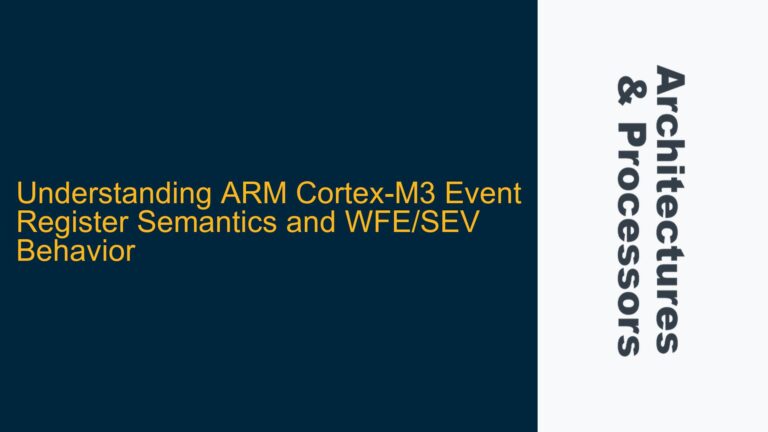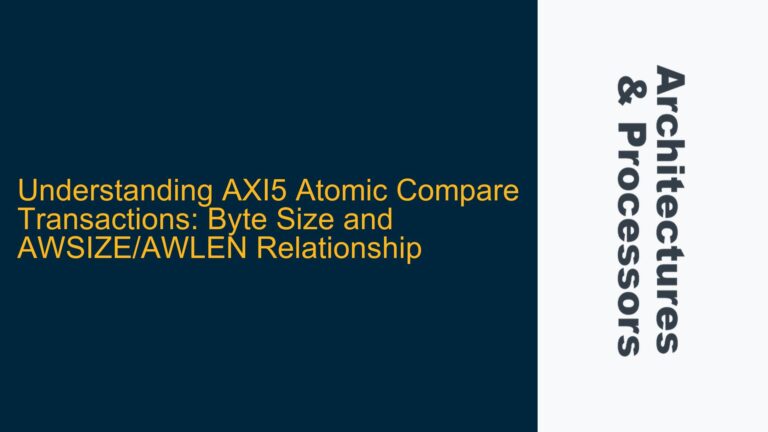ARM Cortex-M7 ITCMERR Event and Its Implications
The ARM Cortex-M7 processor, known for its high performance and advanced features, includes Tightly Coupled Memory (TCM) for low-latency access. The Instruction Tightly Coupled Memory (ITCM) is a critical component for storing and executing code with minimal delay. However, when an ITCM error (ITCMERR) occurs, the processor must handle the situation to maintain system integrity and reliability. An ITCMERR typically arises due to issues such as memory corruption, access violations, or hardware faults within the ITCM region.
When an ITCMERR is detected, the Cortex-M7 processor triggers a fault exception. This fault is categorized under the HardFault or BusFault exceptions, depending on the specific configuration and severity of the error. The processor’s response to an ITCMERR is governed by its fault handling mechanism, which prioritizes system stability and provides diagnostic information for debugging. The fault handler must be carefully implemented to ensure that the system can either recover gracefully or shut down safely, depending on the application’s requirements.
The ITCMERR event is particularly critical because it directly impacts the instruction fetch pipeline. If the processor cannot fetch valid instructions from the ITCM, it cannot continue normal execution. This scenario necessitates immediate intervention to prevent undefined behavior or system crashes. The Cortex-M7 provides several registers, such as the Fault Status Registers (FSRs) and HardFault Status Register (HFSR), to help diagnose the root cause of the ITCMERR. These registers contain bits that indicate the type and source of the fault, enabling developers to pinpoint the issue.
Understanding the implications of an ITCMERR requires a deep dive into the Cortex-M7’s memory architecture and fault handling mechanisms. The ITCM is mapped to a specific address range, and any access outside this range or with incorrect permissions can trigger an ITCMERR. Additionally, the ITCM’s interface with the processor core must adhere to strict timing and protocol requirements. Violations of these requirements, whether due to hardware or software issues, can lead to ITCMERR events.
Memory Access Violations and Hardware Faults Leading to ITCMERR
The primary causes of ITCMERR events in the ARM Cortex-M7 can be broadly categorized into memory access violations and hardware faults. Memory access violations occur when the processor attempts to read or write to the ITCM in an unauthorized or invalid manner. This can happen due to software bugs, such as incorrect pointer arithmetic or buffer overflows, which result in the processor accessing memory outside the defined ITCM region. Additionally, misconfigured Memory Protection Unit (MPU) settings can lead to access violations, as the MPU is responsible for enforcing memory access permissions.
Hardware faults, on the other hand, are typically caused by physical issues within the ITCM or its interface with the processor core. These faults can include electrical issues such as signal integrity problems, timing violations, or even manufacturing defects. In some cases, environmental factors like temperature fluctuations or electromagnetic interference can exacerbate these issues, leading to intermittent ITCMERR events. The Cortex-M7’s fault detection mechanisms are designed to identify and flag these issues, but diagnosing the root cause often requires detailed analysis of the hardware and system design.
Another potential cause of ITCMERR is improper initialization or configuration of the ITCM. During system startup, the ITCM must be correctly initialized, and its address range and access permissions must be properly configured. If this initialization process is flawed, the processor may encounter ITCMERR events when attempting to access the ITCM. This is particularly critical in systems where the ITCM is used for critical code execution, as any errors in this region can lead to system instability or failure.
The interaction between the ITCM and other system components, such as the cache and DMA controllers, can also contribute to ITCMERR events. For example, if the cache is not properly invalidated or flushed before accessing the ITCM, stale or incorrect data may be fetched, leading to errors. Similarly, DMA transfers that incorrectly target the ITCM region can cause access violations or data corruption, triggering ITCMERR events. These interactions highlight the importance of careful system design and thorough testing to ensure that all components work together seamlessly.
Diagnosing and Resolving ITCMERR Events in Cortex-M7 Systems
Diagnosing and resolving ITCMERR events in ARM Cortex-M7 systems requires a systematic approach that combines hardware and software analysis. The first step is to examine the fault status registers to determine the type and source of the fault. The HardFault Status Register (HFSR) and BusFault Status Register (BFSR) provide valuable information about the nature of the fault, such as whether it was caused by an access violation, a bus error, or a memory management issue. These registers should be inspected immediately after an ITCMERR event to capture the relevant diagnostic information.
Once the fault type has been identified, the next step is to trace the execution flow leading up to the fault. This can be done using a debugger to set breakpoints and examine the call stack. The goal is to identify the specific instruction or memory access that triggered the ITCMERR. This information can help pinpoint the root cause, whether it is a software bug, a misconfiguration, or a hardware issue. In some cases, it may be necessary to enable additional debugging features, such as the Cortex-M7’s Embedded Trace Macrocell (ETM), to capture detailed execution traces.
If the fault is determined to be caused by a software issue, the next step is to review and correct the offending code. This may involve fixing pointer arithmetic errors, ensuring proper buffer management, or correcting MPU settings. It is also important to validate the initialization and configuration of the ITCM during system startup. This includes verifying that the ITCM address range and access permissions are correctly set and that any necessary cache management operations, such as invalidations or flushes, are performed.
In cases where the fault is caused by a hardware issue, a more detailed analysis of the system design and hardware components is required. This may involve reviewing the schematic and layout to identify potential signal integrity issues, such as improper termination or routing errors. Additionally, environmental factors should be considered, and the system should be tested under various conditions to ensure robustness. If a hardware defect is suspected, it may be necessary to work with the component manufacturer to diagnose and resolve the issue.
To prevent future ITCMERR events, it is important to implement robust error handling and recovery mechanisms. This includes writing a comprehensive fault handler that can capture and log diagnostic information, as well as implementing strategies for graceful recovery or safe shutdown. Additionally, thorough testing and validation should be performed to ensure that the system can handle all possible error conditions. This includes stress testing, fault injection, and long-term reliability testing to identify and address any potential issues before they occur in the field.
In summary, diagnosing and resolving ITCMERR events in ARM Cortex-M7 systems requires a combination of detailed hardware and software analysis. By systematically examining the fault status registers, tracing the execution flow, and reviewing the system design, developers can identify and address the root cause of the issue. Implementing robust error handling and recovery mechanisms, along with thorough testing and validation, can help prevent future ITCMERR events and ensure the reliability and stability of the system.

